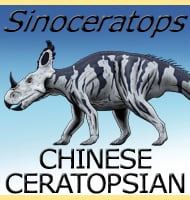Sonidosaurus
In Depth With an estimated length of about nine meters long for the holotype individual, Sonidosaurus was actually pretty small for a late Cretaceous titanosaur. Hailing from the Iren Dabasu Formation, Sonidosaurus may have been preyed upon by tyrannosaurs of the time such as Alectrosaurus. Further Reading - A new titanosaurian sauropod from Late Cretaceous … Read more
